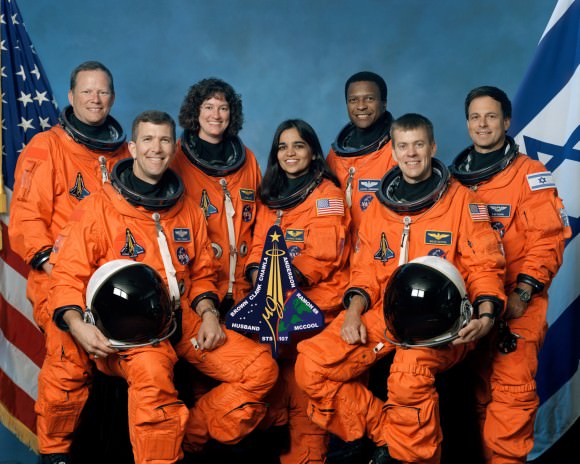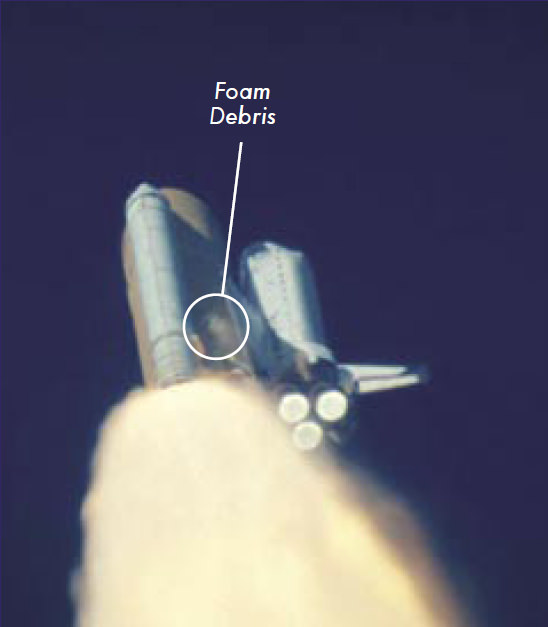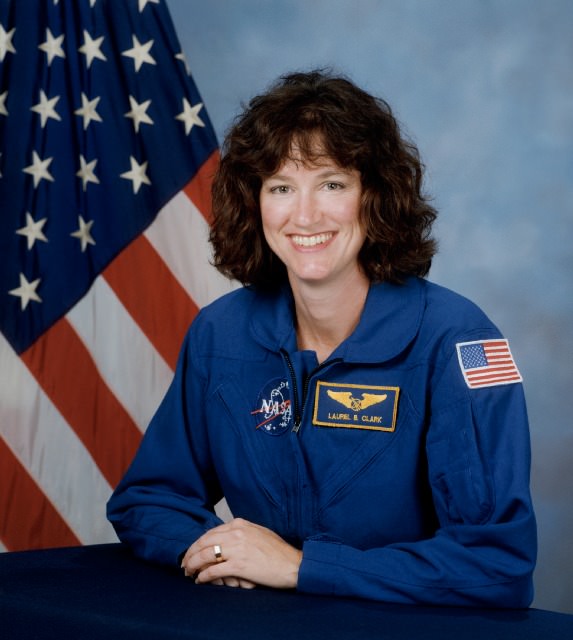STS-107 Mission Specialist Laurel B. Clark (NASA)
On this Day of Remembrance, February 1, 2013, NASA will mark the 10th anniversary of the STS-107 Columbia accident with a wreath-laying ceremony at the astronaut memorial in Arlington National Cemetery, paying tribute to the lost crews of Columbia, Challenger and Apollo 1, as well as other space explorers and NASA colleagues who have passed on. Most of us have our own personal memories of the tragic events that took the lives of these brave few who risked everything in the name of exploration, knowledge, and discovery, and I’ve agreed to share one person’s connection to the Columbia crew.
Laurel Nendza, a fellow space blogger over on that social media site that begins with F and rhymes with “acebook” has a particular connection with STS-107 Mission Specialist Laurel B. Clark… if only that they both love space and share the same first name. Still, it’s enough to hang one’s heart on, and Laurel (the blogger) recently posted a particularly touching note that was sent by Laurel (the astronaut) to her family just before Columbia headed back on its ill-fated return trip home. Here’s Laurel’s (and Laurel’s) story:
On February 1, 2003, the seven [STS-107] crew members were lost with the Space Shuttle Columbia over North Texas during the shuttle’s re-entry. They were brave men and women who gave their lives for space exploration.
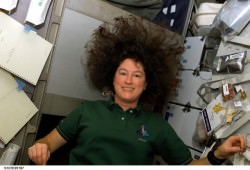 One member has always stood out to me. Her name was Laurel Clark. She would probably agree that growing up there were never any other Laurels around. She may at one time hated her name like I did, only to realize she was actually cool and unique because she was the only one around with that name. But Laurel is not just a name, it’s a personality trait. I know a handful of Laurels (mostly from Facebook) and we all seem to have the same things in common. Most of us always have had deep compassion for animals, the Earth, and the sky above us. Laurel Clark was no different.
One member has always stood out to me. Her name was Laurel Clark. She would probably agree that growing up there were never any other Laurels around. She may at one time hated her name like I did, only to realize she was actually cool and unique because she was the only one around with that name. But Laurel is not just a name, it’s a personality trait. I know a handful of Laurels (mostly from Facebook) and we all seem to have the same things in common. Most of us always have had deep compassion for animals, the Earth, and the sky above us. Laurel Clark was no different.
What was different about Laurel Clark is that she was just a handful of people on Earth, EVER, who actually achieved what we all dream. She was an astronaut and got to go to outer space. She had the privilege (that she worked very hard to get) to witness our pale blue dot from above as well as breathtaking auroras, lightning, and the Sun and Moon rising.
Before she departed to her last shuttle flight home she sent an email to her family and close friends. She told them of every incredible, awe-inspiring moment she had been a part of. She and the other 6 members who perished in the Columbia tragedy are true heroes and inspirations to all who came after her. They are my inspiration. My dream is to also be able to see my beautiful planet from above, and to see the stars shine bright in all their glory.
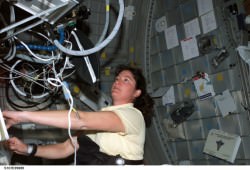 She was the first Laurel in space, who knows? Maybe one day I will be the next?
She was the first Laurel in space, who knows? Maybe one day I will be the next?
Rest in peace all the brave crew of the Shuttle Columbia.
Below is Laurel Clark’s last message to her loved ones on Earth:
“Hello from above our magnificent planet Earth. The perspective is truly awe-inspiring. This is a terrific mission and we are very busy doing science round the clock. Just getting a moment to type e-mail is precious so this will be short, and distributed to many who I know and love.
I have seen some incredible sights: lightning spreading over the Pacific, the Aurora Australis lighting up the entire visible horizon with the cityglow of Australia below, the crescent moon setting over the limb of the Earth, the vast plains of Africa and the dunes on Cape Horn, rivers breaking through tall mountain passes, the scars of humanity, the continuous line of life extending from North America, through Central America and into South America, a crescent moon setting over the limb of our blue planet. Mount Fuji looks life a small bump from up here, but it does stand out as a very distinct landmark.
Magically, the very first day we flew over Lake Michigan and I saw Wind Point (Wisconsin) clearly. Haven’t been so lucky since. Every orbit we go over a slightly different part of the Earth. Of course, much of the time I’m working back in Spacehab and don’t see any of it. Whenever I do get to look out, it is glorious. Even the stars have a special brightness.
I have seen my ‘friend’ Orion several times. Taking photos of the earth is a real challenge, but a steep learning curve. I think I have finally gotten some beautiful shots the last 2 days. Keeping my fingers crossed that they’re in sharp focus.
My near vision has gotten a little worse up here so you may have seen pics/video of me wearing glasses. I feel blessed to be here representing our country and carrying out the research of scientists around the world. All of the experiments have accomplished most of their goals despite the inevitable hiccups that occur when such a complicated undertaking is undertaken. Some experiments have even done extra science. A few are finished and one is just getting started today.
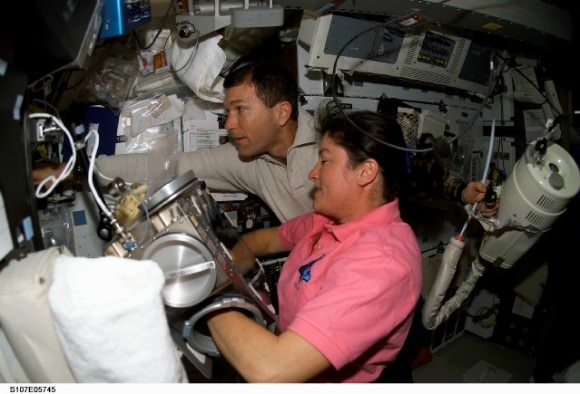
Astronaut Laurel B. Clark, STS-107 mission specialist, conducting a check of the YSTRES experiment in the Biopack incubator. Astronaut Rick D. Husband, mission commander, holds a vacuum cleaner to perform general housekeeping duties on the middeck of the Space Shuttle Columbia. (NASA)
The food is great and I am feeling very comfortable in this new, totally different environment. It still takes a while to eat as gravity doesn’t help pull food down your oesophagus. It is also a constant challenge to stay adequately hydrated. Since our body fluids are shifted toward our heads our sense of thirst is almost non-existent.
Thanks to many of you who have supported me and my adventures throughout the years. This was definitely one to beat all. I hope you could feel the positive energy that beamed to the whole planet as we glided over our shared planet.
Love to all, Laurel.”
You can find out more about Laurel Clark and the other STS-107 crew members on the NASA History site here.
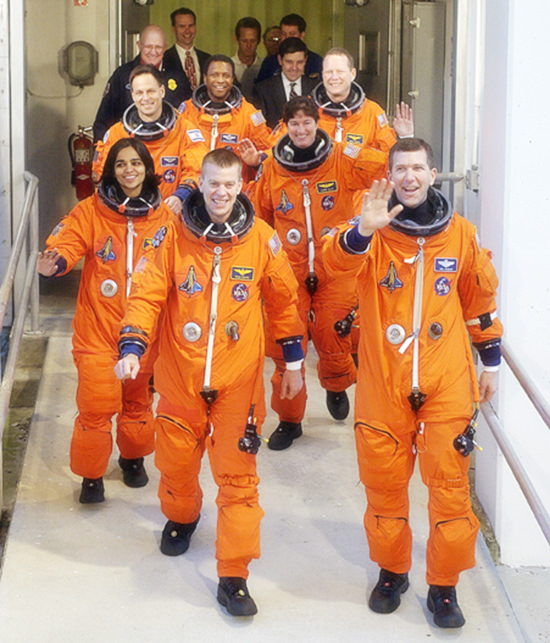
The STS-107 crew, waving to onlookers, exited the Operations and Checkout Building on their way to Launch Pad 39A for liftoff on Jan. 16, 2003. Leading the way were Pilot William “Willie” McCool (left) and Commander Rick Husband (right). Following in the second row are Mission Specialists Kalpana Chawla (left) and Laurel Clark; in the rear are Payload Specialist Ilan Ramon, Payload Commander Michael Anderson and Mission Specialist David Brown. All seven perished during re-entry breakup two weeks later on Feb. 1, 2003. (NASA)
See more of Laurel Nendza’s posts on her Facebook page, Stellar Eyes.
At 10 a.m. EST on Feb. 1, NASA TV will provide live coverage of a wreath-laying ceremony at the Space Mirror Memorial located in the Kennedy Space Center Visitor Complex in Florida. Flags across the agency will be flown at half-staff memory of the Columbia crew and all who have lost their lives in dedication of space exploration.
